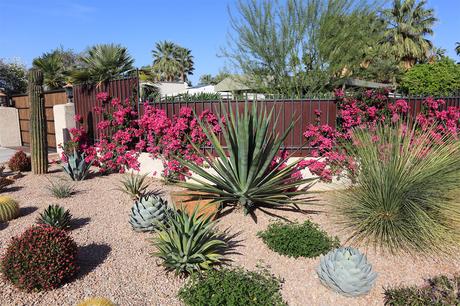
With summers that are increasingly hot, plants that are drought-resistant are becoming quite useful for gardeners. A lot of plants all over the world are naturally adapted to grow in dry conditions.
Many times, you can tell if a plant is adapted to growing in these kinds of conditions since their leaves are succulent, waxy, sticky, hair, needle-like, small, silver in color, or scented. If these plants are looked after well in their first season, they will be quite forgiving of dry conditions in future years.
Below you can find seven of the top drought-resistant flowers, shrubs, and grasses for both full shade and the sun. Even when the rain dries up, these plants still go on. They are sure to survive dry periods while adding distinctive texture and color to your garden.
Agave
Agaves store water inside their thick foliage and send their roots deep under the soil's surface to collect any available water. The leaf has sharp edges, and landscapers often use agave because of the interesting shape of the foliage and because they are low care and drought tolerant plants.
Growing is simple if you plant in the right location. Agave needs gritty soil and full. They can do very well when potted, but use a pot that is unglazed which will let excess moisture evaporate. Water needs of this plant are moderate to light depending on the heat of the season.
Bougainvillea
This shrug is a champion at tolerating the dry seasons. Bougainvillea appears to be one of the toughest shrubs which thrive on neglect in intense and extreme conditions. This colorful plant is simple to grow, as well.
Bougainvillea plants will weaken with too much watering, but if you let the soil dry out the plant will get stressed. Therefore, a happy medium is needed - enough water to keep the soil damp, but without waterlogging the plant. These plants are prolific growers and need proper pruning to maintain a beautiful shape and force blooming. After it has finished blooming for the season, cut it back a few inches.
Penstemon
This perennial comes in several different colors including blue, bright red, purple, pink, variegated, yellow, and sometimes white. There are over 250 varieties of this plant, and some species attract hummingbirds. Penstemon will tolerate a small amount of water but needs good soil drainage.
Lithops
These are small and inconspicuous plants which look like pebbles or stones. They can be grown in pots, indoors, or outdoors in a sunny location and dappled shade. They like well-drained soil which is poor in organic matter. You should water them deeply, but irregularly. In temperate climates, lithops bloom in fall and need to be watered two to three times deeply each month until the end of fall.
Gaillardia
A blanket flower, Gaillardia has no special needs. Anyone who has a green finger can make it bloom substantially. All it needs is a sunny spot and occasional watering. It blooms all summer and in the fall as well. You can grow this plant in cold and warm tropical climates.
When the plants sprout, thin them to around 15 to 18 inches apart and water them every 10 to 14 days during the summer and early fall. They don't like being damp, so allow the soil to dry out between watering. Deadhead the flowers as needed. Cut off faded flower heads to encourage a second flush of bloom in the fall.
Lantana
This hardy, tropical plant is grown for its fragrant, colorful flowers. It loves heat and drought and is a less demanding plant which grows in any soil. The flowers attract bees, butterflies, and hummingbirds. It is easy to grow in pots, too.
Give these plants 16 to 18 inches between them, since they will spread and grow quickly. Water well after planting and provide supplemental water for several weeks as they establish roots. Prune them throughout the summer by clipping the tops of each stem.
Sage
This perennial herb is drought-resistant and is famous for its aromatic flavor. It is best to grow it when the weather begins to warm up after frost when there is plenty of sunshine. It has low requirements for watering, and overwatering can kill sage fast.
Water young plants regularly until they are full grown and prune the woody, heavier stems each spring.
This post was written by Carl Marley who offers tree surgery in the north east @ www.treesurgeonmiddlesbrough.co.uk
